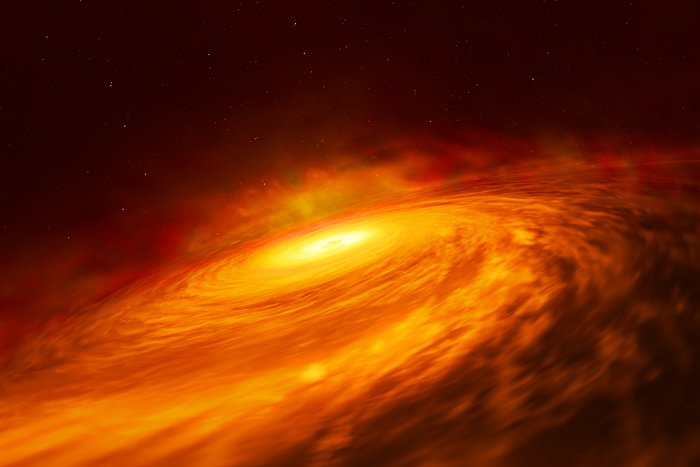
Hubble has discovered something odd: A disc of material around a supermassive black hole which was thought to be starving. The black hole in question lies at the center of the spiral galaxy NGC 3147, which is 130 million light-years away from Earth.
Astronomers were surprised to find the disc as they had thought that the black holes in a galaxy like this would be dying, as they usually do not capture enough dust and gas through their gravity to keep being regularly fed. But the disc of material around this black hole looks like what is seen in very active galaxies. Using computer models, the team investigated what happens when galaxies are active but give off relatively little light, predicting that a disc of material would be present when lots of gas is in the area. This process emits a lot of light, forming a quasar.
“The type of disc we see is a scaled-down quasar that we did not expect to exist,” the study’s first author, Stefano Bianchi, of Università degli Studi Roma Tre in Italy, explained in a statement. “It’s the same type of disc we see in objects that are 1,000 or even 100,000 times more luminous. The predictions of current models for very faint active galaxies clearly failed.”
Another interesting feature about the disc of material is that it demonstrates the theory of relativity. The disc is deep in the gravity field of the black hole, so much so that the strong gravitational forces actually affect the light waves given off. “This is an intriguing peek at a disc very close to a black hole, so close that the velocities and the intensity of the gravitational pull are affecting how we see the photons of light,” Bianchi explained. “We’ve never seen the effects of both general and special relativity in visible light with this much clarity,” team member Marco Chiaberge said in the statement.
To see the matter in the disc, the team used Hubble’s Space Telescope Imaging Spectrograph, a combined camera and spectrograph, which splits light into different wavelengths to gather highly precise information about an object’s speed and temperature.



